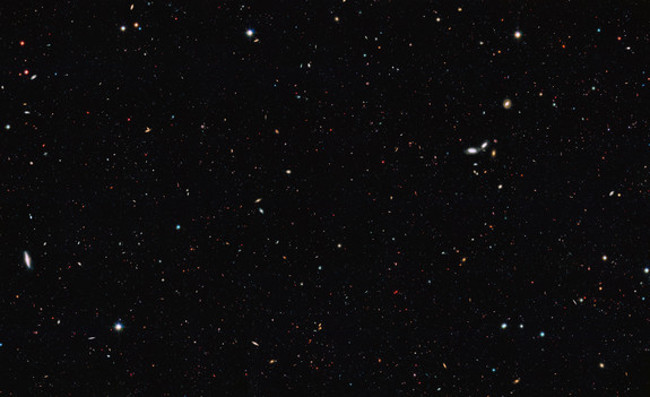The number of galaxies in the universe is 10 times more than what astronomers thought before
According to Phys.org, " A team of astronomers discovered that the universe has 10 times more galaxies than previously thought ."
More than a billion galaxies are hidden in the depth of space, a new investigation of the number of galaxies in the observed universe - 10 times more than previously thought.
A group of astronomers around the world have used deep-space imagery and other data from the Hubble Space Telescope to create a 3D map of a known universe. of which there are about 100-200 trillion galaxies. In particular, astronomers rely on Hubble's deep space images, including the farthest galaxies ever observed with a telescope.
Later, the researchers combined new mathematical models to determine the locations of galaxies not yet captured by telescopes that might exist. With the given numbers, the universe has at least 10 times the number of galaxies compared to what scientists thought existed before. However, galaxies that have not been seen are likely to be too faint or too far away to be observed with today's telescopes .
 The image was taken by the Hubble Space Telescope and the southern part of the Great Observatories Origins Deep Survey (GOODS) project data.This is a survey of large numbers of galaxies, an in-depth study of the sky of observatories to monitor the formation and development of galaxies.Photo source: NASA, ESA / Hubble
The image was taken by the Hubble Space Telescope and the southern part of the Great Observatories Origins Deep Survey (GOODS) project data.This is a survey of large numbers of galaxies, an in-depth study of the sky of observatories to monitor the formation and development of galaxies.Photo source: NASA, ESA / Hubble
" Thinking in the head that there are still more than 90% of galaxies in the universe yet to be found, " Christopher Conselice , a professor of astrophysics at Nottingham University in the UK, who led the study, said. in a report. " Nobody can predict the interesting properties we will find when observing galaxies with next-generation telescopes ."
Looking far into the deep space also means looking back at the past, because the light takes a long time to go through the cosmic distance. In this study, Conselice and his team observed parts of the universe of up to 13 billion light-years. This distant observation allows researchers to see what snapshots of the universe have evolved since 13 billion years ago, or less than 100 million years after the Big Bang .
They found that: " Even more, the universe previously contained more galaxies than today. These distant galaxies are small and faint dwarf galaxies. Because of the universe, the galaxies also combine to form larger galaxies . "
In another report, Conselice said: " The results are surprising when we know that, more than 13.7 billion years of evolution of the universe, since the Big Bang, the galaxies have developed pine. Through star formation and merging with other galaxies Discovering more galaxies in the past implies that significant evolution must take place to reduce the number of galaxies by system integration. extensive ".
The results of the study are detailed in The Astrophysical Journal.
You should read it
- Admire the majestic spectacle of swirls of dust and gas in nearby galaxies
- 3D map of the largest universe ever
- The most intense battle in the history of the Milky Way was recorded
- Find out how to weigh black holes based on galaxy spiral arms
- The largest-ever explosion in the universe created a giant hot-air sphere that could hold 15 Milky Way galaxies
- Discover incredible facts about our cosmic planet
 NASA announces more than 1,000 latest Martian surface images
NASA announces more than 1,000 latest Martian surface images The supernova exploded twice in the universe, surprising astronomers
The supernova exploded twice in the universe, surprising astronomers Successfully creating cosmic black holes, demonstrating Hawking radiation exists
Successfully creating cosmic black holes, demonstrating Hawking radiation exists Mysterious dwarfs come from a wild place in the universe
Mysterious dwarfs come from a wild place in the universe Do you think the Sun stands still and the Earth revolves around it? Just wrong!
Do you think the Sun stands still and the Earth revolves around it? Just wrong! NASA exploration robots capture the surface of Mars like Earth
NASA exploration robots capture the surface of Mars like Earth